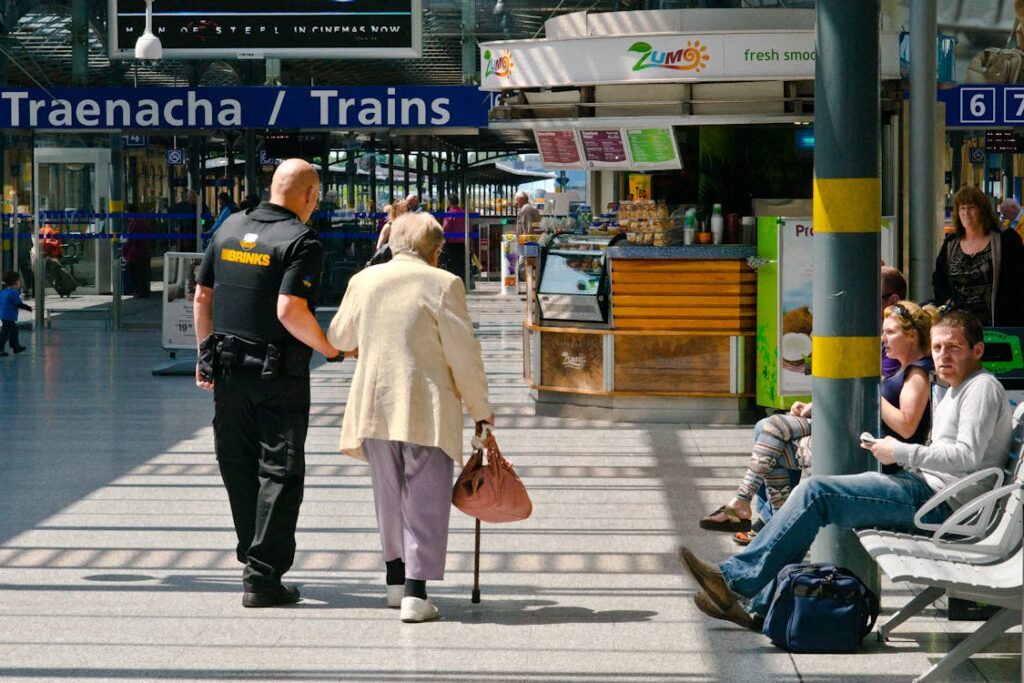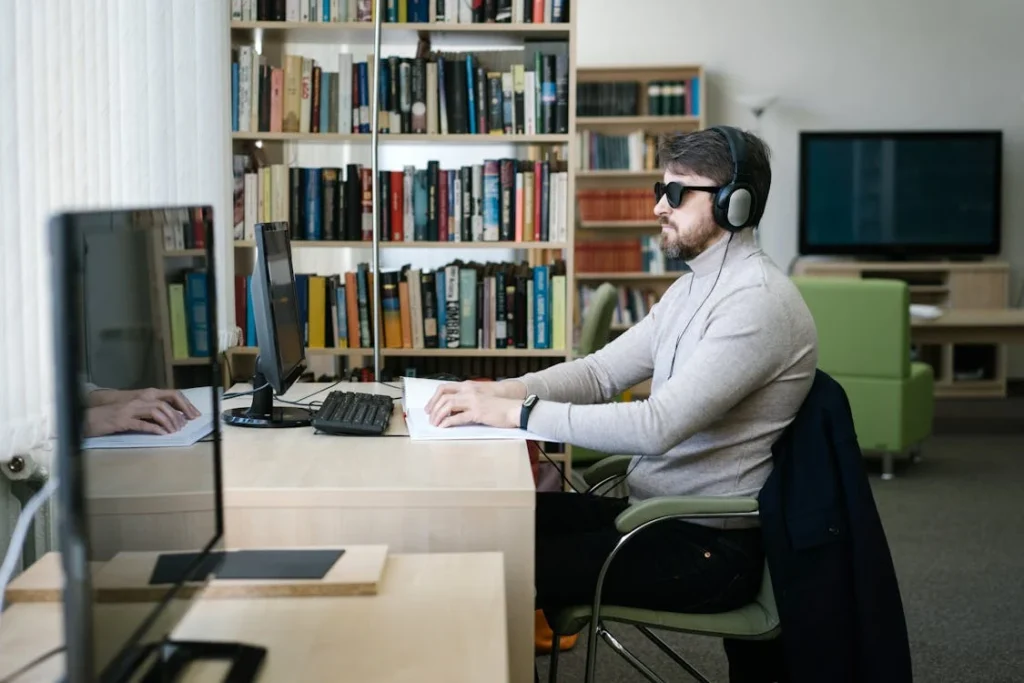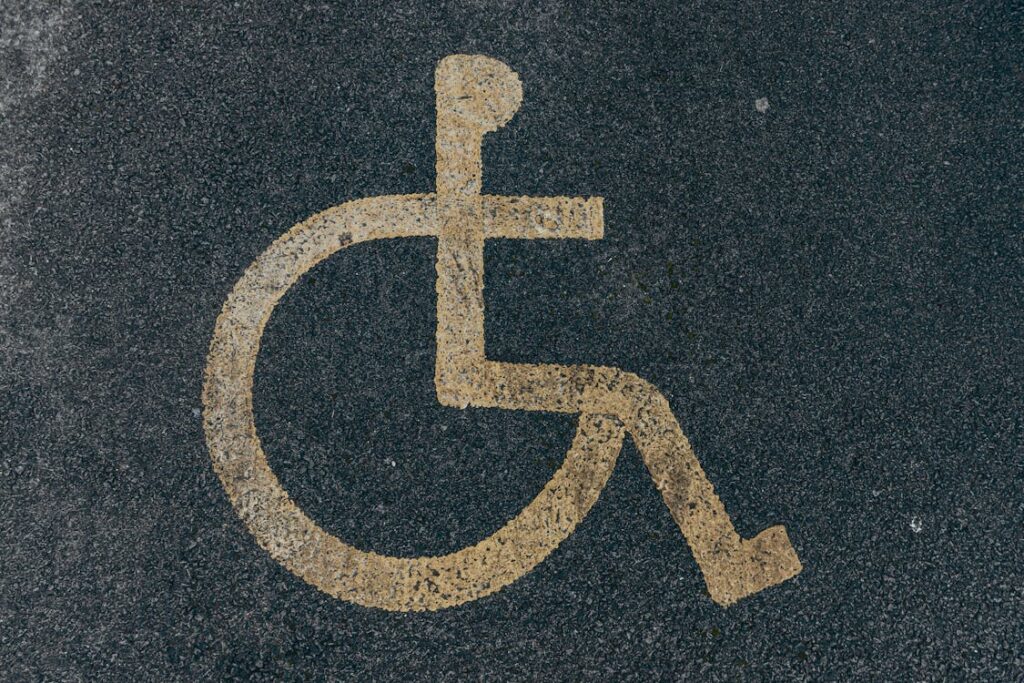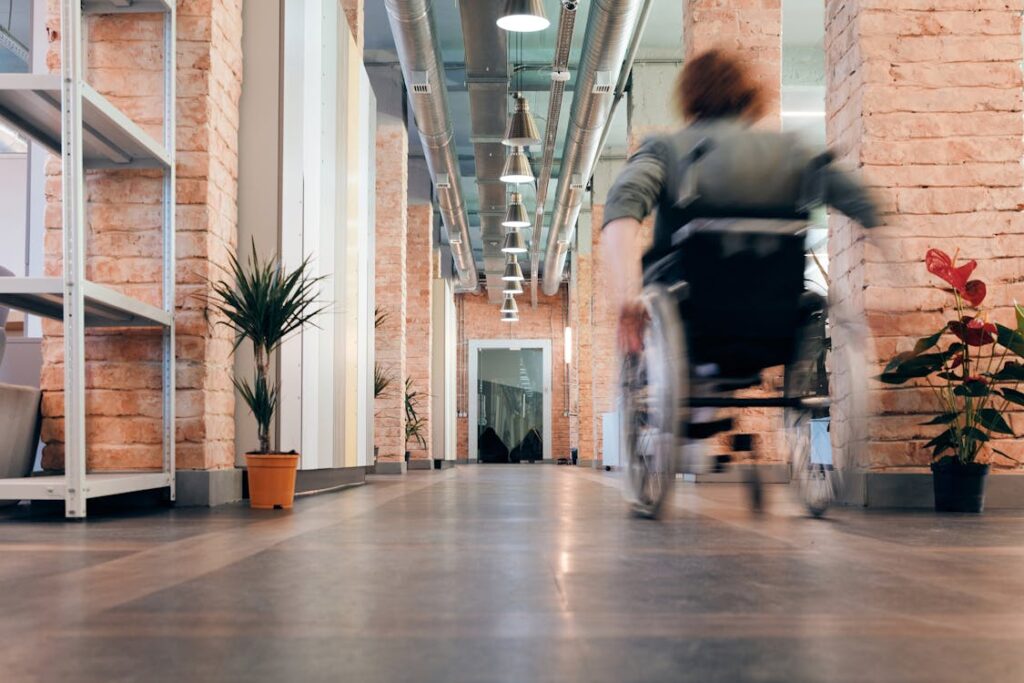Accessibility in public spaces is not just about convenience—it’s about basic human rights. Everyone, regardless of their physical abilities, should be able to navigate their city, use public transport, enter buildings, and enjoy public facilities without barriers. However, many places still lack proper accessibility, making it difficult for people with disabilities to move freely and independently.
Advocating for accessibility means pushing for change, raising awareness, and ensuring that cities, businesses, and policymakers prioritize inclusive design. It involves speaking up, collaborating with local authorities, and educating people about why accessibility matters. The good news is that real change is possible when enough voices come together.

Understanding the Barriers to Accessibility
Before advocating for accessibility in public spaces, it is essential to recognize the obstacles that people with disabilities face every day.
Many urban areas are designed without inclusivity in mind, creating physical, social, and technological barriers that prevent equal participation.
Addressing these challenges requires a deep understanding of how inaccessible environments impact mobility, safety, and independence.
Physical Barriers in Public Spaces
One of the most visible barriers is the lack of infrastructure that accommodates individuals with mobility impairments.
Narrow sidewalks, uneven pavements, and stair-only access to buildings make it difficult for wheelchair users and those with mobility aids to navigate their surroundings.
Many public transport systems are also inaccessible, with buses and trains lacking ramps, elevators, or designated spaces for wheelchairs.
Entrances to businesses, government offices, and entertainment venues often do not have automatic doors, forcing individuals with limited mobility to rely on assistance.
Public restrooms without grab bars, high counters at service points, and inaccessible seating arrangements in parks or restaurants further limit independence. These obstacles are not just inconveniences; they actively exclude people from fully participating in society.
The Importance of Inclusive Signage and Communication
Public spaces should be navigable for everyone, including those with visual and hearing impairments.
However, many locations fail to provide adequate signage in braille or audio guidance for visually impaired individuals.
Information boards, public transport schedules, and emergency instructions are often presented only in text, making it difficult for those with low vision to access vital details.
For individuals who are deaf or hard of hearing, a lack of captioning or sign language interpretation in public announcements creates a communication barrier. In emergency situations, this lack of accessible communication can pose serious risks.
The absence of assistive listening devices in theaters, conference centers, and public institutions further contributes to isolation and exclusion.
The Role of Technology in Accessibility
Technology has the potential to bridge many accessibility gaps, but only when implemented correctly. Public spaces should integrate digital solutions such as tactile maps, AI-powered navigation apps, and real-time captioning services to enhance accessibility.
Many cities are already experimenting with smart technology to provide better assistance for individuals with disabilities, but there is still a long way to go.
Automated ticketing machines, kiosks, and ATMs often rely on touchscreen-only interfaces, making them inaccessible for individuals with visual impairments.
A lack of voice commands or braille support can prevent users from independently accessing essential services.
Similarly, mobile apps and websites for public transport, government services, and event bookings are often not optimized for screen readers, limiting digital accessibility.
Social and Attitudinal Barriers
Beyond physical and technological barriers, there is also a significant social challenge in advocating for accessibility. Many people, including business owners and city planners, do not recognize the importance of inclusive design.
Misconceptions about disability and a lack of awareness about accessibility needs contribute to environments that fail to accommodate everyone.
Some individuals with disabilities face discrimination when requesting accommodations, whether at a workplace, a restaurant, or a public service facility.
The assumption that accessibility is an “extra” rather than a necessity leads to slow progress in implementing inclusive policies. Changing public perception and increasing awareness is just as critical as making structural changes.
Understanding these barriers is the first step toward meaningful advocacy. The next step is taking action to push for a more inclusive and accessible world.

Taking Action: How to Advocate for Accessibility
Advocating for accessibility in public spaces requires persistence, education, and collaboration. Change does not happen overnight, but with the right approach, individuals and communities can influence policies and improve urban environments for everyone.
Whether you are directly affected by inaccessibility or are supporting those who are, your voice matters.
Raising Awareness and Educating Others
One of the most effective ways to advocate for accessibility is by educating those who may not fully understand the challenges faced by people with disabilities.
Many business owners, government officials, and even members of the public are unaware of how their environment excludes individuals with mobility, visual, hearing, or cognitive impairments. Bringing awareness to these issues is the first step toward change.
Public campaigns, social media advocacy, and community discussions can all help in highlighting the importance of accessibility.
Sharing personal experiences, real-life stories, and examples of inaccessible spaces can make these issues more relatable to those who might not have considered them before.
Public demonstrations, such as accessibility walks or events where people experience navigating a city in a wheelchair or blindfolded, can be powerful tools in illustrating the daily challenges faced by individuals with disabilities.
Engaging with local schools and universities is also an effective way to educate younger generations about the importance of inclusive design.
By teaching accessibility awareness early on, we can create a future where urban planning and infrastructure naturally prioritize inclusivity.
Engaging with Local Government and Policymakers
Laws and regulations play a crucial role in ensuring accessibility in public spaces. However, even in cities with strong disability rights laws, enforcement can be inconsistent.
Advocates must work with local governments to ensure that accessibility policies are implemented effectively.
Writing to city officials, attending town hall meetings, and working with disability advocacy groups can help push accessibility improvements onto the political agenda.
Presenting data on the economic and social benefits of accessible cities can also be an effective strategy.
Research shows that businesses that prioritize accessibility attract more customers, including aging populations and individuals with temporary injuries who also benefit from inclusive design.
Many cities have accessibility committees or advisory groups that work with government departments to improve public spaces.
Getting involved in these groups can provide a platform for voicing concerns, proposing solutions, and influencing policy decisions. If such a group does not exist in your area, working with disability rights organizations to establish one can be a great step forward.
Encouraging Businesses to Improve Accessibility
Public spaces include privately owned establishments such as restaurants, hotels, and retail stores. Many business owners do not realize how simple changes—such as installing ramps, lowering counters, or improving signage—can make their establishments more inclusive.
Speaking directly to business owners about accessibility improvements can be highly effective. Many are open to making changes when they understand that accessibility benefits not only people with disabilities but also their overall customer base.
Encouraging businesses to comply with accessibility laws and offering them guidance on practical solutions can create more inclusive communities.
Accessibility audits can also be conducted at the local level, where advocates visit businesses and public spaces to assess their level of inclusivity.
Compiling reports and presenting findings to city officials or business associations can push for widespread improvements. Recognizing businesses that prioritize accessibility through awards or public appreciation can also encourage others to follow suit.
Using Technology to Drive Change
Advocacy does not have to rely solely on traditional methods. Technology offers new ways to promote accessibility and hold organizations accountable.
Mapping platforms that allow users to rate accessibility in public spaces, such as Wheelmap and AXS Map, provide valuable crowd-sourced data. These apps help individuals with disabilities find accessible places while also encouraging businesses to improve their facilities.
Social media and digital campaigns can amplify advocacy efforts. Online petitions, accessibility awareness videos, and hashtags dedicated to disability rights can reach a broader audience and generate public pressure for change.
Crowdsourced data on accessibility barriers can also be used to approach policymakers with concrete evidence of where improvements are needed.
Advocating for Better Public Transportation
Public transport is one of the most critical aspects of accessibility. A city may have well-designed sidewalks and ramps, but if buses, trains, and taxis are not accessible, individuals with disabilities still face major mobility challenges.
Advocates can work with transportation authorities to push for improvements such as step-free access to buses and trains, audible announcements for visually impaired passengers, and clear signage for individuals with cognitive disabilities.
Ensuring that paratransit services—transport options specifically designed for people with disabilities—are efficient and widely available is another essential aspect of advocacy.
Monitoring public transport systems and reporting accessibility failures can drive change.
If an elevator in a subway station is consistently out of service, or if buses frequently fail to deploy their wheelchair ramps, bringing attention to these issues through official complaints, media coverage, and social campaigns can lead to improvements.
Building a Culture of Inclusion
Beyond infrastructure and policy changes, advocacy for accessibility is about creating a culture of inclusion. Accessibility should not be seen as an afterthought but as a fundamental part of urban planning and public service.
Changing public attitudes toward disability and accessibility requires consistent effort, but it is one of the most impactful ways to drive lasting change.
Encouraging businesses, schools, and local governments to include accessibility in their training programs can help normalize the idea that accessibility is everyone’s responsibility.
The more people understand its importance, the more likely they are to support and demand inclusive environments.
By working together as a community, educating those in power, and using technology to amplify voices, advocates can create cities that are accessible to all. Change happens when individuals take action, and every effort—no matter how small—contributes to a more inclusive world.

Legal Rights and Policies: Holding Authorities Accountable
Advocating for accessibility is not just about requesting change—it is about ensuring that laws and policies protecting disability rights are enforced.
Many countries have legal frameworks in place to guarantee accessibility in public spaces, but without proper oversight, these laws often go ignored. Understanding existing legal rights and holding authorities accountable is a critical step in making real progress.
Understanding Disability Rights Laws
Different countries have different laws governing accessibility, but the principles remain the same: ensuring that people with disabilities have equal access to public spaces, transportation, and services.
In India, the Rights of Persons with Disabilities (RPWD) Act, 2016 mandates accessibility in public and private spaces, requiring government buildings, transportation systems, and workplaces to be inclusive.
Other nations have similar legislation, such as the Americans with Disabilities Act (ADA) in the U.S., the Equality Act in the U.K., and the Accessibility for Ontarians with Disabilities Act (AODA) in Canada.
These laws outline the responsibilities of governments, businesses, and service providers in making spaces accessible. However, the challenge lies in ensuring that these laws are followed and that violations are addressed.
Reporting Accessibility Violations
One of the most effective ways to advocate for accessibility is by reporting violations of disability rights laws.
If a public building lacks a wheelchair ramp, an elevator is consistently out of order, or a government office does not provide accessible communication options, these should be documented and reported.
Complaints can be filed with local disability rights organizations, human rights commissions, or government agencies responsible for accessibility enforcement.
Gathering evidence is crucial when filing complaints. Taking photos or videos, collecting testimonies from affected individuals, and referring to legal guidelines can strengthen a case.
Many disability rights groups assist in filing legal complaints and ensuring that violations are addressed through official channels.
If local authorities do not respond, taking the issue to media outlets can bring public attention to accessibility failures.
Journalists and disability advocates often highlight stories of non-compliance, creating pressure on businesses and government agencies to take corrective action.
Working with Legal Advocacy Groups
Many non-governmental organizations (NGOs) and legal aid groups specialize in disability rights advocacy. Partnering with these organizations can provide legal support, guidance, and additional resources for pushing accessibility reforms.
Legal advocacy groups often engage in class-action lawsuits or petition governments to strengthen enforcement mechanisms.
Some organizations conduct accessibility audits, assessing whether public buildings and services comply with legal requirements. Their findings can be used to push for changes in urban planning and influence new accessibility policies.
Advocating for Policy Improvements
Even in places where accessibility laws exist, there is often room for improvement. Many policies lack clear enforcement guidelines, leaving accessibility improvements dependent on voluntary compliance.
Advocates can push for stricter penalties for non-compliance, increased funding for accessibility projects, and better monitoring systems to ensure progress.
Engaging with policymakers through petitions, legislative proposals, and public discussions can help shape new accessibility standards.
Advocates can push for mandatory accessibility training for architects, urban planners, and business owners to ensure that new developments prioritize inclusive design.
Accessibility should be more than a legal requirement—it should be a fundamental aspect of urban planning.
By holding authorities accountable, raising awareness of legal rights, and working with legal advocates, individuals and communities can drive systemic change, ensuring that public spaces are accessible to all.

Building Stronger Communities for Accessibility
True accessibility is not just about laws and infrastructure—it’s about creating a society that values inclusion. A city can have ramps, elevators, and braille signs, but if its people are unaware of the importance of accessibility, real change will always be slow.
Advocating for accessibility requires not just policy changes but also cultural shifts. Building stronger, more informed communities is essential for long-term progress.
The Role of Community Advocacy
Communities play a crucial role in making public spaces more accessible. When local residents understand the importance of inclusivity, they are more likely to support accessibility improvements in their neighborhoods, workplaces, and public facilities.
Advocacy does not have to be limited to individuals with disabilities—friends, family members, and allies can all contribute to making spaces more welcoming.
Community groups focused on disability awareness can organize events, workshops, and training sessions for schools, businesses, and public service providers.
By engaging directly with people who design and manage public spaces, advocates can ensure that accessibility remains a priority.
Schools, in particular, should teach students about disability inclusion from an early age, fostering a generation that values accessibility as a fundamental right rather than an optional feature.
Encouraging Businesses to Take the Lead
Private businesses have a major influence on accessibility in public spaces. Shopping malls, restaurants, hotels, and entertainment venues make up a large portion of urban life, yet many still fail to provide basic accessibility features.
Business owners should recognize that making their establishments inclusive is not just an ethical responsibility but also a smart financial decision.
Advocates can encourage businesses to adopt accessibility-friendly practices by highlighting the benefits of an inclusive customer base.
People with disabilities, elderly individuals, and parents with strollers all benefit from accessible spaces. When businesses make their facilities more inclusive, they attract a larger and more diverse group of customers.
Recognizing and promoting accessibility-friendly businesses can also encourage others to follow suit.
Community initiatives that highlight inclusive establishments—through awards, certifications, or social media recognition—can create a positive competitive environment where businesses strive to improve accessibility.
Using Social Media to Amplify Voices
Social media has become one of the most powerful tools for advocacy. A single post highlighting an accessibility issue can reach thousands of people, sparking discussions and mobilizing action.
Platforms like Twitter, Instagram, and Facebook provide spaces where advocates can share personal stories, showcase accessibility failures, and celebrate progress.
Hashtags dedicated to accessibility issues help raise awareness and connect advocates across the world. Online petitions can also create pressure for policy changes, especially when they gain widespread support.
Many disability rights campaigns have successfully led to real-world changes simply by using digital platforms to amplify their message.
Technology also allows advocates to create visual demonstrations of accessibility challenges. Video content showing the difficulties of navigating public spaces without proper infrastructure can be eye-opening for those who have never experienced such barriers firsthand.
When presented effectively, these messages can influence policymakers, business owners, and the general public to take action.
Creating Support Networks
No advocacy effort succeeds without strong support networks. People with disabilities, caregivers, allies, and professionals in urban planning must work together to create sustainable change.
Support groups, advocacy organizations, and disability rights forums provide spaces for individuals to share experiences, exchange ideas, and collaborate on projects.
Mentorship programs can also help new advocates learn from experienced accessibility activists. Understanding how to approach businesses, engage with local governments, and effectively communicate the need for change can make advocacy efforts more successful.
By building strong, informed communities, accessibility becomes a movement rather than just a demand.
The Path Toward a More Inclusive Society
A truly accessible society is one where accessibility is not an afterthought but a fundamental part of how cities, businesses, and governments operate.
Advocacy is the bridge between inaccessible spaces and a future where everyone, regardless of ability, can move freely, participate fully, and live independently.
By fostering awareness, pushing for policy changes, holding authorities accountable, and using technology to drive the conversation, individuals and communities can reshape the world around them.
Every action, no matter how small, contributes to a future where public spaces are designed for everyone.

Overcoming Challenges in Accessibility Advocacy
Advocating for accessibility in public spaces is rewarding, but it is not without challenges. Resistance from policymakers, lack of awareness among business owners, and budget constraints often slow down progress.
However, understanding these obstacles and finding effective ways to address them can make advocacy efforts more successful.
Addressing Resistance to Change
One of the biggest challenges in accessibility advocacy is the misconception that accessibility improvements are too costly or unnecessary.
Many decision-makers view accessibility as an expense rather than an investment, failing to recognize the long-term benefits it brings to society.
To overcome this, advocates should highlight the economic and social advantages of accessibility. Businesses that invest in inclusive spaces attract more customers, including individuals with disabilities, elderly individuals, and families with young children.
Cities that prioritize accessibility benefit from increased tourism, a stronger workforce, and improved public services. Demonstrating these benefits with real-world examples can help change the mindset that accessibility is a burden.
Another common form of resistance comes from those who believe accessibility is already “good enough.” Many urban planners and policymakers assume that a few ramps or designated parking spaces are sufficient.
Advocacy efforts should focus on showing how incomplete or poorly designed accessibility features still create barriers. For example, a ramp at a building entrance is useless if the interior remains inaccessible.
Raising awareness through demonstrations, social media campaigns, and firsthand experiences can help decision-makers understand that accessibility must be comprehensive, not minimal.
Working Around Budget Constraints
Many cities and businesses cite budget limitations as a reason for delaying accessibility improvements. While large-scale projects like rebuilding sidewalks, installing elevators, or upgrading public transportation require funding, not all accessibility solutions are expensive.
Advocates can push for small but meaningful changes that require little investment but have a big impact.
Simple adjustments like adding clear signage, lowering service counters, installing grab bars in restrooms, or improving website accessibility can be implemented without major expenses.
Additionally, many governments offer grants and funding programs for accessibility projects. Advocates can help businesses and local authorities apply for these funds, ensuring that financial concerns do not prevent necessary improvements.
Some organizations also provide financial incentives for businesses that meet accessibility standards, encouraging them to take action sooner rather than later.
Ensuring That Accessibility is Not an Afterthought
One of the most frustrating aspects of accessibility advocacy is seeing new buildings, roads, and public facilities being constructed without proper inclusive design.
Retrofitting structures to be accessible after they are built is often more expensive and less effective than designing them correctly from the start.
To prevent this, accessibility must be integrated into urban planning from the beginning. Advocates should push for laws that require accessibility to be a mandatory consideration in new developments.
This includes ensuring that all public transportation systems, office buildings, residential complexes, and recreational spaces are designed with universal access in mind.
Encouraging local governments to involve disability rights groups in the planning process can lead to more thoughtful and inclusive designs. Many accessibility issues arise simply because decision-makers do not consult with people who actually experience these challenges.
Having individuals with disabilities participate in planning committees ensures that accessibility is built into projects rather than added later as an afterthought.
Overcoming Public Indifference
One of the less obvious but equally important challenges in accessibility advocacy is public indifference. Many people who do not face accessibility challenges themselves may not see the urgency of these issues.
This lack of awareness can slow down progress and make advocacy efforts feel like an uphill battle.
Storytelling is one of the most powerful tools to overcome indifference. Real-life experiences, whether shared through speeches, articles, or social media, can make accessibility issues feel personal and urgent.
When people hear firsthand accounts of individuals struggling to access basic services due to poor infrastructure, they are more likely to support change.
Media coverage also plays a vital role in shaping public perception. News articles, documentaries, and interviews featuring accessibility challenges can educate the wider population and build momentum for policy changes.
Advocates should work with journalists and influencers to bring these stories to a larger audience.
Keeping the Momentum Going
Advocacy is not a one-time effort. It requires continuous pressure, follow-ups, and monitoring to ensure that promises made by businesses and governments are kept.
Many accessibility commitments start with good intentions but fade away due to lack of enforcement or shifting priorities.
Creating accountability systems can help keep momentum going. Advocates can establish monitoring groups that regularly check whether accessibility promises are being fulfilled.
Publicly tracking progress through online platforms, reports, or annual accessibility assessments can also keep pressure on decision-makers.
Encouraging more people to get involved in advocacy ensures that efforts are sustained over time. Training new advocates, organizing workshops, and expanding networks create a lasting impact.
The more voices that join the movement, the harder it becomes for authorities to ignore the demand for change.
A Step Toward a More Accessible World
Despite the challenges, advocating for accessibility in public spaces is worth the effort. Every sidewalk that becomes wheelchair-friendly, every bus that adds step-free access, and every building that installs clear signage brings us closer to a more inclusive society.
Change may take time, but every small victory contributes to a future where accessibility is not a privilege—it is a right.

Conclusion
Advocating for accessibility in public spaces is about more than ramps and elevators—it’s about creating a society where everyone, regardless of ability, can navigate, participate, and live independently. While challenges such as resistance to change, budget constraints, and public indifference exist, persistence and education can drive meaningful progress.
By raising awareness, engaging with policymakers, encouraging businesses to prioritize inclusion, and leveraging technology, individuals and communities can make a real impact. Small changes, from improved signage to better public transport access, contribute to a larger movement toward universal design.
True accessibility is not an afterthought; it must be an integral part of how cities and public spaces are built. Every step taken toward advocacy, no matter how small, brings us closer to a world where accessibility is not just an option but a fundamental right for all. The more voices that demand change, the more inclusive our future will be.




Pingback: Why Building in Public Is Your Best Marketing Strategy - TigerJar